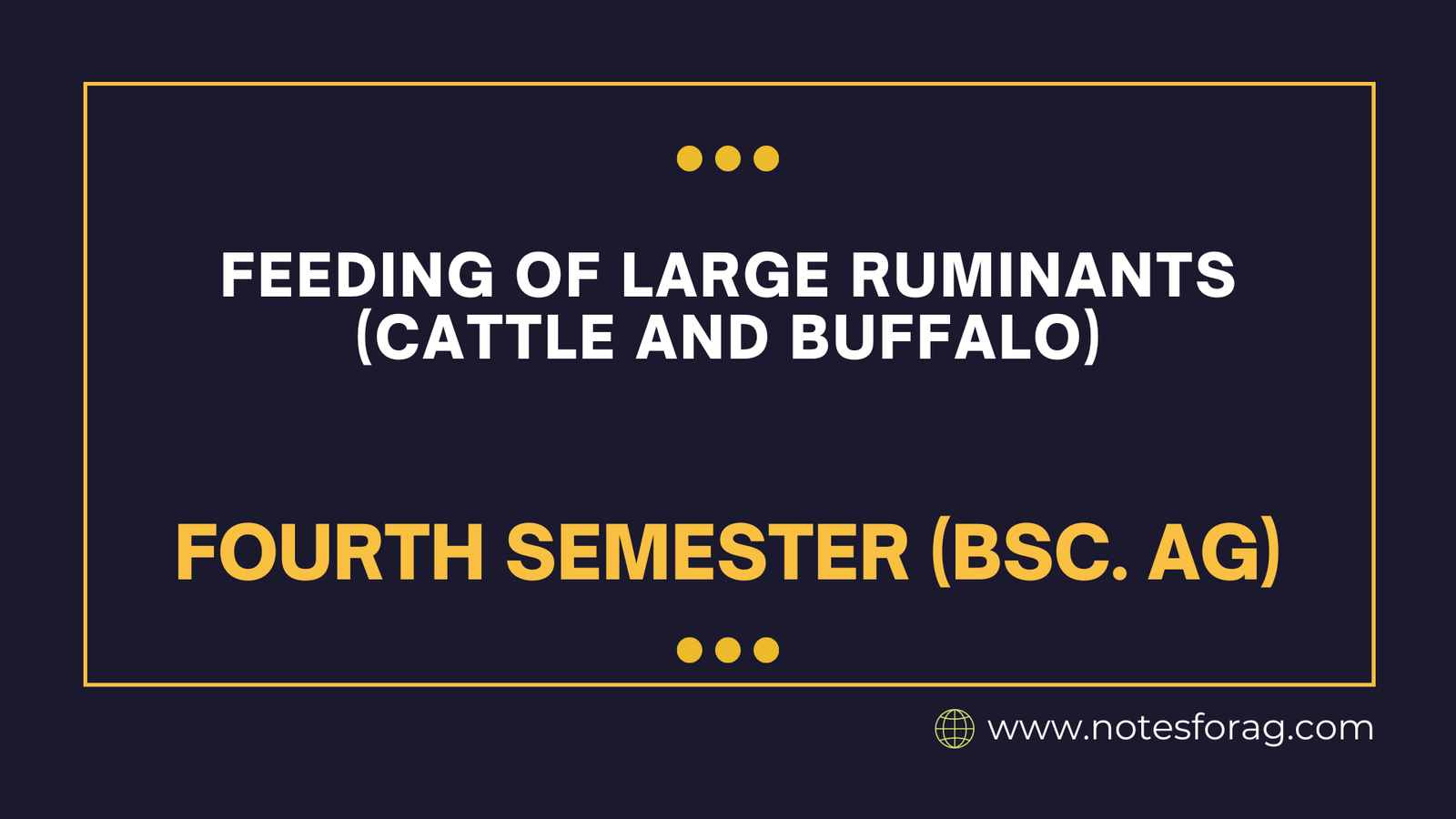Cattle and buffalo, as large ruminants, play a vital role in the global food system, providing meat, milk, and byproducts like leather. Their distinct digestive systems, characterised by a rumen with a diverse microbial community, enable them to subsist on roughages such as grasses and forages. However, for optimal growth, milk production, and reproduction, a well-defined dietary regimen is required.
Table of Contents
Understanding Ruminant Digestion
Cattle and buffalo, unlike humans and other non-ruminants, lack enzymes capable of breaking down complex polysaccharides such as cellulose, the primary component of plant cell walls. This is where the rumen microorganisms come in. These microbes convert cellulose and other carbohydrates into Volatile Fatty Acids (VFAs), the principal source of energy for ruminants. The rumen also functions as a protein and vitamin production factory due to its microbial population.

Feeding Principles for Large Ruminants
Here are some key principles to consider when feeding cattle and buffalo:
- Meeting Roughage Needs: Roughages like forages (grasses, legumes) should form the base of the diet. They provide essential fiber for rumen function, stimulate saliva production (important for buffering rumen pH), and contribute to a sense of satiety. Aim for at least 50-70% of the diet to be roughage.
- Balancing Energy and Protein: Energy, largely from carbs, is essential for survival, growth, and milk production. Protein is necessary for muscular growth, reproduction, and milk production. The ideal energy-to-protein ratio is determined by the animal’s physiological status (growth, lactation, pregnancy) and production goals.
- Mineral and Vitamin Requirements: Minerals such as calcium, phosphorus, salt, and trace minerals are required for bone health, muscular function, and many metabolic activities. Vitamins, particularly A, D, and E, play important roles in immune function, reproduction, and eyesight. Mineral and vitamin deficiencies can be remedied by supplementation, particularly during times of increased need (pregnancy and breastfeeding).
- Water Availability: Clean, fresh water is vital for all bodily functions in cattle and buffalo. Daily water intake varies depending on factors like weather, diet, and physiological state. Ensure adequate access to clean water at all times.
- Supplementation with Concentrates: While roughages are necessary, they may not always offer enough calories or protein, particularly in high-production animals. Concentrates, such as grains (corn, barley) or oilseed meals (soybean meal), can be incorporated into the diet to meet these additional requirements. However, concentrate consumption should be moderated to avoid rumen acidosis, a digestive condition caused by excessive fermentation of quickly digested carbohydrates.
Feeding Strategies for Different Production Goals
The specific feeding regime for cattle and buffalo will vary depending on the desired outcome:
- Beef Cattle: When raising and finishing beef cattle, the goal is to maximise muscle growth and fat deposition. As the animal reaches slaughter weight, the diet will normally include more concentrates than roughage.
- Dairy Cattle: The goal for breastfeeding dairy cows is to maximise milk output. To meet the cow’s energy requirements for milk synthesis, the meal will have a higher calorie content, sometimes with increased concentrate levels. Protein consumption is also important for milk production.
- Breeding Stock: Pregnant and breastfeeding women have higher nutrient requirements. Their food may need to be adjusted to ensure that both the mother and the developing calf get enough energy, protein, minerals, and vitamins.
Additional Considerations
There are some additional considerations while feeding cattle and buffalo. They are as follows:
- Feed Quality: The quality and digestibility of feed ingredients have a substantial impact on nutrient utilisation and animal performance. Factors like as forage maturity, storage conditions, and mould presence can all have an impact on feed quality.
- Feed Management Practices: Proper storage, handling, and delivery of feed ensure its quality and prevent spoilage or contamination.
- Monitoring and Adjustments: Regular monitoring of animal weight, body condition score, milk production, and feed intake allows adjustments to the feeding regime if needed.
Conclusion
Feeding large ruminants like cattle and buffalo effectively necessitates an awareness of their distinct digestive systems and dietary requirements based on production objectives. By adhering to these principles, using high-quality feeds, and executing proper feeding techniques, producers may ensure their cattle and buffalo’s best performance, health, and productivity.
Frequently Asked Questions (FAQs)
What is the general principle for feeding cattle and buffaloe?
Thumb rule for cattle feeding.
The average DM (Dry matter) requirement of desi cow is 2 (dry) to 2.5 (lactating) Kg. / 100 Kg. body weight / day while it is 2.5 (dry) to 3.0 Kg. (lactating) in cross breed cows and buffaloes.
What is the feeding plan of buffalo?
An apparently healthy adult buffalo should be daily fed 6 kg dry fodder and 15-20 kg of green fodder.
What are the different types of feeding systems for cattle?
There are two major types of feeding systems: component feeding and a total mixed ration (TMR). Component feeding is when forages, protein supplements, and grains are fed individually to the cow.
Related Articles

